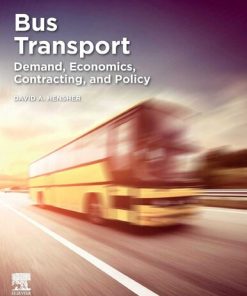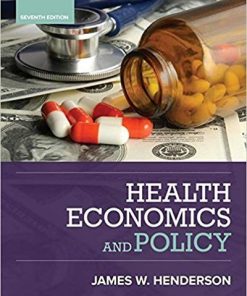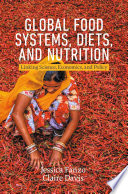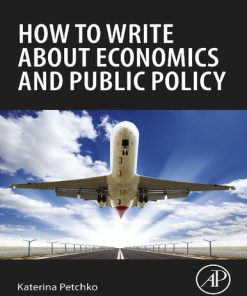(Ebook PDF) Conservation Economics Science and Policy 1st edition by Charles Perrings, Ann Kinzig 0190613637 9780190613631 full chapters
$50.00 Original price was: $50.00.$25.00Current price is: $25.00.
Conservation: Economics, Science, and Policy 1st edition by Charles Perrings, Ann Kinzig – Ebook PDF Instant Download/DeliveryISBN: 0190613637, 9780190613631
Full download Conservation: Economics, Science, and Policy 1st edition after payment.
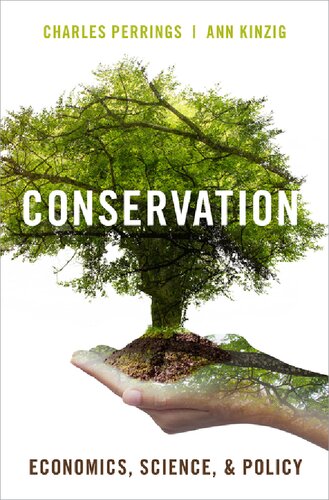
Product details:
ISBN-10 : 0190613637
ISBN-13 : 9780190613631
Author : Charles Perrings, Ann Kinzig
A unified theory of conservation that addresses the broad problem of conservation, the principles that inform conservation choices, and the application of those principles to the management of the natural world.The conservation of natural resources, like that of any other asset, involves trade-offs. Yet, in a world faced with the harsh realities of climate change, crafting the right environmental policies is an increasingly urgent task. In Conservation, Charles Perrings and Ann Kinzig bring together new research in economics and biodiversity to investigate conservation decisions and the theory behind them.Perrings and Kinzig apply the concept of conservation broadly to examine how the principles of conservation apply to the management of the natural world. They demonstrate that the same basic principles serve as the foundation of all rational conservation decisions, from managing financial assets to safeguarding at-risk ecosystems. Whether someone is deciding to hold or dispose of a stock or whether to exploit or preserve a natural resource, they are better off choosing to conserve a resource when its value to them, if conserved, is greater than its value when converted. The book also considers the context of such conservation decisions. Just as national tax rules influence choices about financial investments, environmental regulations within countries, and environmental agreements between countries, impact the decisions regarding natural resources. Building on their basic theory of conservation, Perrings and Kinzig address key issues in the field of environmental economics, including the valuation of ecosystem services and environmental assets; the limits on the substitutability of produced and natural capital; and the challenges posed by the often weak markets for ecosystem services oriented toward the public good. They also address the problem of scale: while decisions might be easier to make at the local level, many conservation policies need to apply at either the national or international level to succeed. Written by experts from both social and hard sciences, this book presents a unified theory of conservation and provides a model for a more effective way to approach the vitally important issue.
Conservation: Economics, Science, and Policy 1st Table of contents:
1 Environmental Conservation and Environmental Change
1.1 Introduction
1.2 The biological record
1.3 Implications for conservation
1.4 Plan of the book
Part I The Economic Theory of Conservation
2 The Decision Problem
2.1 Introduction
2.2 Elements of the decision problem
2.3 A numerical example: the wine storage problem
2.4 Summary and conclusions
3 Hotelling Conservation
3.1 Introduction
3.2 The Hotelling arbitrage condition
3.3 Hotelling prices and quantities
3.4 Renewable natural resources and the Hotelling arbitrage condition
3.5 Connecting Hotelling conservation and conservation biology
3.6 Summary and conclusions
4 The Conservation of Renewable Resources
4.1 Introduction
4.2 Marine capture fisheries
4.3 Forests and forestry
4.4 Rangelands
4.5 Summary and conclusions
Part II Valuation
5 The Valuation of Environmental Goods and Services
5.1 Introduction
5.2 The basis of value
5.3 Ecosystem services and the value of nonmarketed environmental resources
5.4 The valuation of provisioning and cultural services
5.5 Revealed preference methods
5.6 Stated preference methods
5.7 The valuation of regulating services
5.8 Summary and conclusions
6 The Valuation of Environmental Assets
6.1 Introduction
6.2 Sustainability and the value of environmental assets
6.3 The value of environmental assets in the national accounts
6.4 Inclusive wealth
6.5 Environmental assets and total factor productivity
6.6 Summary and conclusions
7 Substitutability and the Valuation of Natural Capital
7.1 Introduction
7.2 Substitution in production
7.3 Substitution in a generalized model of joint production
7.4 Substitution and public goods
7.5 Net substitutes and complements
7.6 Conditional substitutes and complements
7.7 Summary and conclusions
Part III Aligning The Private and Social Value of Natural Resources
8 Environmental Public Goods
8.1 Introduction
8.2 The optimal provision of public goods
8.3 Types of public goods
8.4 Strategic behavior and the provision of public goods
8.5 Resolving the public goods problem
8.6 Summary and conclusions
9 Environmental Externalities
9.1 Introduction
9.2 The nature of environmental externalities
9.3 Unidirectional externalities
9.4 Positional externalities
9.5 Public externalities
9.6 Aligning private and social value
9.7 Summary and conclusions
10 Poverty, Value, and Conservation
10.1 Introduction
10.2 Income effects and poverty
10.3 Poverty-population-environment
10.4 Per capita income growth and conservation
10.5 Wealth, property rights, and conservation
10.6 Summary and conclusions
11 Conservation in Protected Areas
11.1 Introduction
11.2 Protected area design: ecological principles
11.3 Protected area design: economic principles
11.4 Protected areas and the supply of ecosystem services
11.5 Protected areas and poverty
11.6 Summary and conclusions
12 Conservation Beyond Protected Areas
12.1 Introduction
12.2 Conservation of threatened wild species outside protected areas
12.3 Conservation in agriculture
12.4 Habitat substitutability
12.5 Summary and conclusions
13 Conservation at the National Level
13.1 Introduction
13.2 Property rights
13.3 Legal restrictions on land use
13.4 Environmental offsets
13.5 Economic incentives
13.6 Summary and conclusions
14 Conservation at the International Level
14.1 Introduction
14.2 Migratory species
14.3 Transboundary and linked ecosystems
14.4 Trade, travel, and the movement of species
14.5 Strategic behavior and transboundary conservation
14.6 Funding conservation as a global public good
14.7 Summary and conclusions
15 Conservation in the Future
15.1 Introduction
15.2 Environmental trends
15.3 Economic trends
15.4 The population affected by conservation decisions
15.5 The optimal scale at which to conserve and the governance of conservation
People also search for Conservation: Economics, Science, and Policy 1st:
conservation economics science and policy
the science and economics of ex situ plant conservation
what is conservation in science
conservation science biology
economic science requirements
Tags:
Conservation,Economics,Science,Policy,Charles Perrings,Ann Kinzig
You may also like…
Business & Economics
Engineering - Civil & Structural Engineering
Politics & Philosophy
Earth Sciences - The Environment
Principles of environmental science: Inquiry and Applications Ninth Edition Mary Ann Cunningham
Business & Economics Society
How to Write about Economics and Public Policy 1st Edition Katerina Petchko
Politics & Philosophy - Social Sciences
Economic Diplomacy and Foreign Policy-making 1st ed. Edition Charles Chatterjee
Technique - Food Manufacturing





